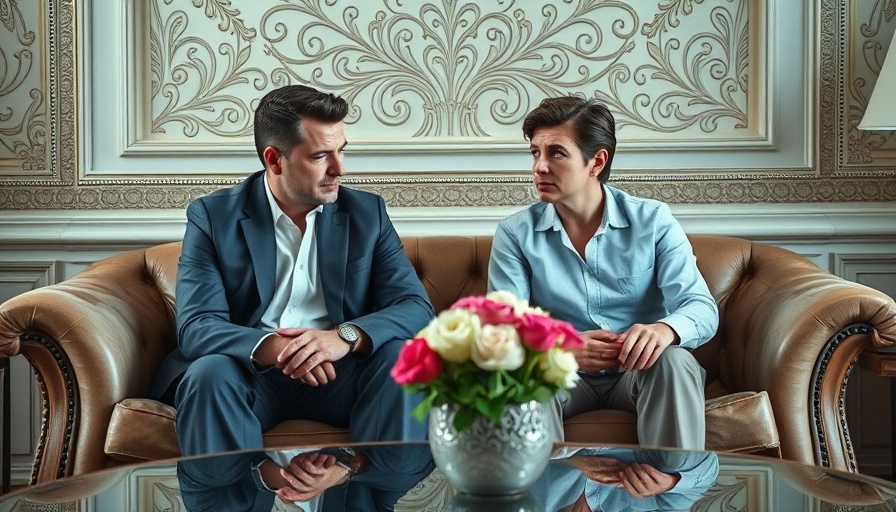
A Guide to Navigating Wellbeing During Divorce
Divorce marks a significant turning point in life, impacting not only your emotions but also your physical and mental health. While it’s common to feel overwhelmed, prioritizing your wellbeing during this time is essential to recover and emerge resilient. Emphasizing self-care and redefining routines can significantly influence your journey through divorce.
Breaking the Monotony: Refreshing Your Routine
Suddenly finding yourself in a new phase of life can be both chaotic and liberating. This is a perfect opportunity to switch up your daily routine. Trying new activities or hobbies can create excitement. Take a dance class, explore gardening, or experiment with different fitness techniques. These new experiences not only provide distraction but also instill a sense of control in a time replete with unpredictability.
Rediscovering Joy: Remember What You Love
As divorce nudges you toward a new identity, embrace the opportunity to connect with what truly matters to you. Engage in activities that enrich your spirit, be it painting or hiking. Finding time to do what you love plays a pivotal role in the healing process. Such activities can reaffirm your identity and provide joy, especially during the tumultuous moments of life. It's these small pockets of happiness that can anchor you during difficult transitions.
Move for Mental Clarity: The Importance of Staying Active
Movement is not just a physical necessity; it’s a powerful ally in managing stress and anxiety. Don’t feel pressured to launch into a rigorous workout regime immediately. Start with simple activities—perhaps a short walk or yoga at home. The goal is to feel better, both mentally and physically. As you engage your body, you may discover that exercise serves as a healthy way to channel your feelings and attain a sense of accomplishment.
The Link Between Food and Emotion: Nurturing Your Body
Emotional upheaval can disrupt eating habits dramatically. Some individuals might skip meals, while others might lean towards comfort foods. Prioritizing nutritional balance is crucial. Include foods rich in omega-3 fatty acids, such as salmon, which supports cognitive health, and yogurt that complements your gut microbiome. Remember, indulgent treats can still play a role in your wellbeing if consumed mindfully. A little self-compassion goes a long way.
Balancing Parenting and Personal Health
For divorced parents, the challenge intensifies as you balance your emotional healing with the responsibilities of parenting. Young children often cannot understand the complexities of divorce, relying on physical connections for reassurance and stability. Offering a comforting embrace can go a long way. For older children, being open and honest about changes can help them process their emotions. Understanding that it’s okay to experience a range of feelings during this time can foster a supportive environment for both you and your children.
Building a Support Network: Lean on Those Around You
You don’t have to navigate this journey alone. Surrounding yourself with a reliable support network can help ease feelings of isolation. Reach out to friends, family, or support groups; they can provide a listening ear or valuable advice. Sharing your feelings can not only uplift your spirits but also cultivate stronger relationships with those around you. Remember, you’re not just healing for yourself but also for those who care about you.
Embracing Self-Care as a Strategy for Health
Amid the whirlwind of emotions and life changes, never underestimate the power of self-care. Small, consistent acts of kindness towards yourself can lead to significant improvements in your mental stability. Taking time to breathe, reflect, and nurture yourself can make a profound difference as you navigate life after divorce. Self-care isn’t just about feeling good in the moment; it’s about building a robust foundation for future resilience and strength.
Conclusion: Prioritize Your Wellbeing
Remember, as you move forward through your divorce, your health is paramount. By taking active steps to maintain your physical and emotional wellbeing, making simple changes in your routine, rediscovering passions, and leaning on your support network, you can emerge not just intact but stronger than before. The divorce experience, while challenging, can lead to a rejuvenated self that embraces life’s possibilities.
 Add Row
Add Row  Add
Add 




Write A Comment